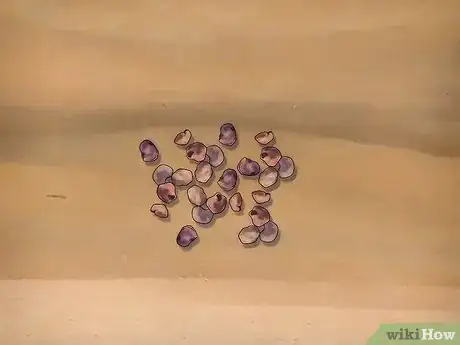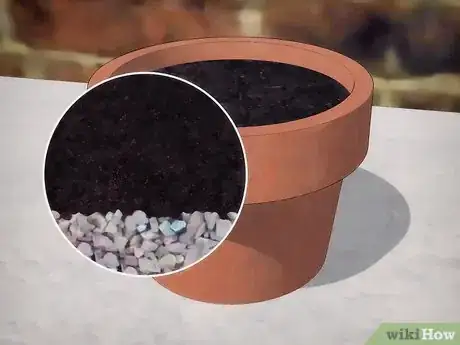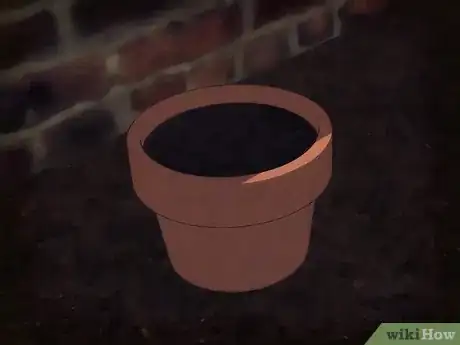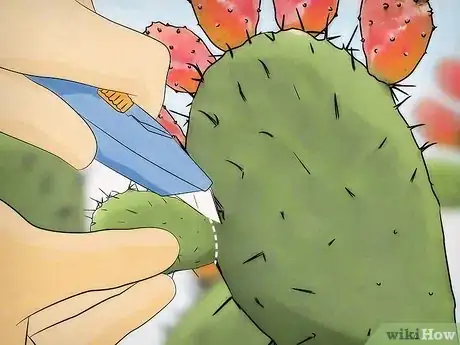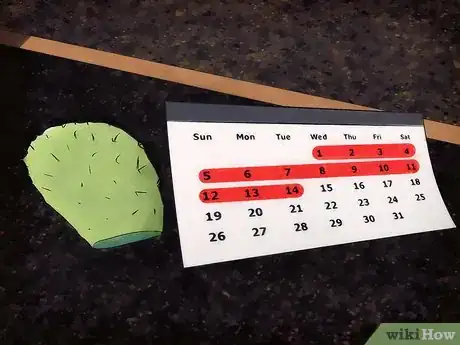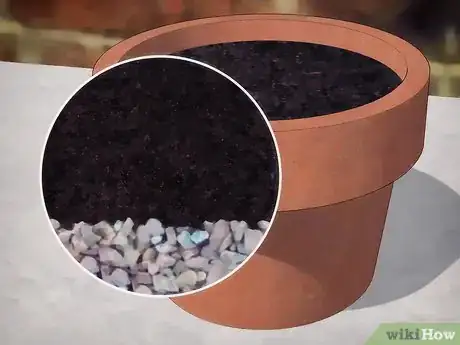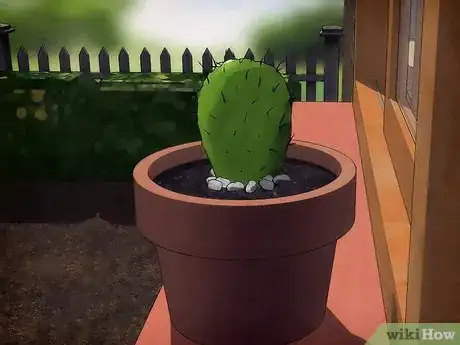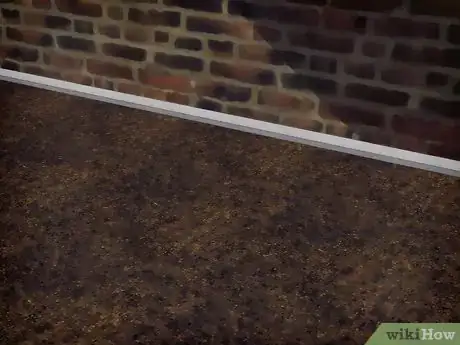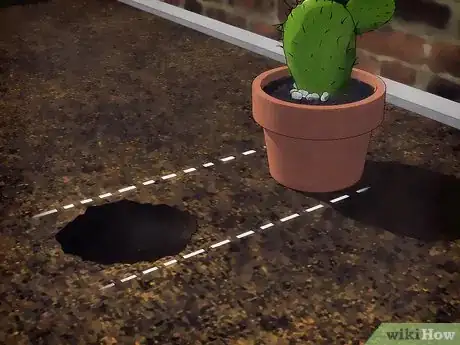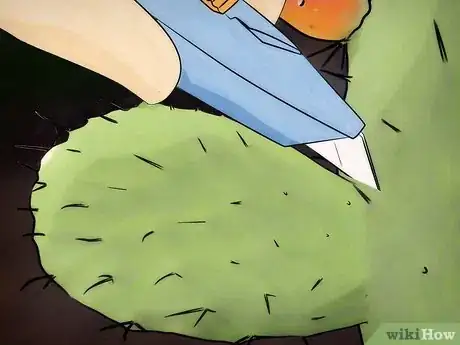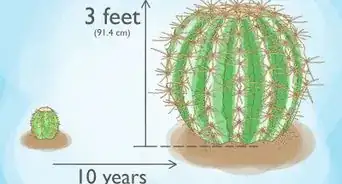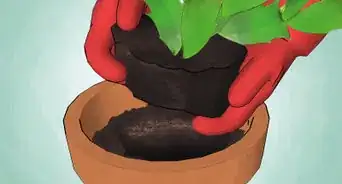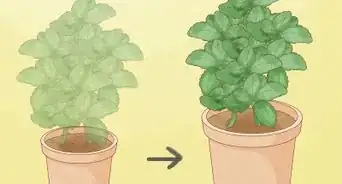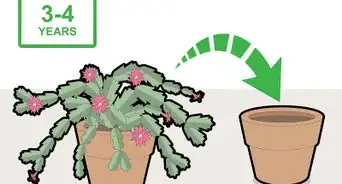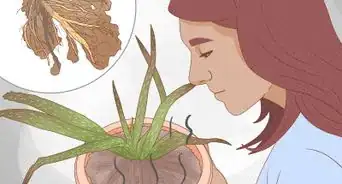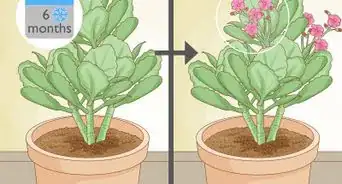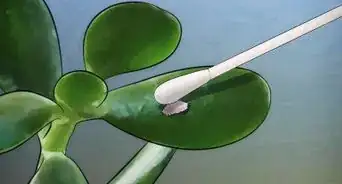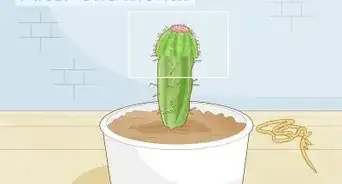This article was co-authored by Andrew Carberry, MPH. Andrew Carberry is a Food Systems Expert and the Senior Program Associate at the Wallace Centere at Winrock International in Little Rock, Arkansas. He has worked in food systems since 2008 and has experience working on farm-to-school projects, food safety programs, and working with local and state coalitions in Arkansas. He is a graduate of the College of William and Mary and holds a Masters degree in public health and nutrition from the University of Tennessee.
There are 8 references cited in this article, which can be found at the bottom of the page.
wikiHow marks an article as reader-approved once it receives enough positive feedback. This article received 16 testimonials and 93% of readers who voted found it helpful, earning it our reader-approved status.
This article has been viewed 210,169 times.
The prickly pear, which is also referred to as the Indian fig, is a type of cactus that’s native to South America, Central America, and the southern parts of North America. Although they prefer desert climates, prickly pears will actually grow in a wide variety of soils, moisture levels, and temperatures. The pads and the fruit of the prickly pear are edible, but the cactus is also grown as an ornamental plant, because it has pretty flowers that range from orange to yellow to white. To grow a prickly pear, you can buy an established plant, germinate seeds from the fruit, or propagate a new plant from an existing one.
Steps
Growing Prickly Pear From Seeds
-
1Obtain the seeds. You can do this by purchasing them from a nursery or garden store, or you can extract them from prickly pear fruit. Prickly pear fruit is a red, egg-shaped fruit that grows off the top of the prickly pear plant. To remove the seeds from a fruit:[1]
- Put on gloves to protect your hands from the thorns. Slice the ends off the fruit. Stand the fruit up on one end.
- Make a thin, vertical slice down one side of the skin, and carefully stick a finger underneath. Peel away the skin by unwrapping the fruit like an orange.
- Use your fingers to break apart the flesh to find the seeds, which are studded throughout the fruit.
-
2Prepare a garden pot. Take a small garden pot that has a hole in the bottom. Cover the bottom of the pot with a layer of small rocks, which will allow water to drain better.
- Fill the pot with soil that contains about half soil and half sand, rough pumice, or loam. These soils drain better than ones with a high clay content, and are more similar to the natural desert soils a cactus prefers.[2]
- You can also purchase a pre-mixed cactus or succulent potting mix.
- If you don’t have any garden pots, you can use a plastic cup. Poke several holes in the bottom to allow water to drain out.
- To grow multiple prickly pears, prepare several garden pots in this way.
Advertisement -
3Plant the seeds. Lay one or two seeds on top of the soil. Gently press the seeds into the soil and cover them with a light dusting of soil.
- Add a small amount of water. You want the soil to be moist, but not wet.
-
4Keep the pots in a warm but shady place. Cactus seeds don’t need direct sunlight the way established plants do. Keep the pots in a shaded area that’s surrounded by sunlight to allow for a warm climate.
- As the seeds grow, keep the soil moist until they germinate.[3] Water the soil when it starts to become dry to the touch.
- Prickly pears grown from seeds tend to take longer to grow than propagated plants, and the resulting cacti could take three to four years to produce flowers and fruit. However, growing plants from seeds is important for ensuring genetic diversity.[4]
Propagating Prickly Pear
-
1Find an establish prickly pear to propagate. Another way to grow prickly pear is to use a cutting from an established plant. Ask friends and neighbors if you can take a cutting from one of their plants if you don’t have any established prickly pears of your own.
- To propagate prickly pear from existing plants, you use cuttings from the pads of the plants, which are actually modified stems or branches.[5]
- The pads are the flat, green, fleshy parts that make up the majority of the plant.
-
2Cut off a pad. Select a healthy pad that’s medium or large in size, and between one and three years old. Ideally, look for a pad that’s free of damage, specks, or any deformities.[6]
- To take a cutting, hold the top of the pad with a gloved hand and slice the pad above the joint where it attaches to the rest of the plant.[7]
- Don’t cut the pad below the joint, because this can cause infection and the plant will rot.
-
3Let the pad form a callous. To prevent infection and rotting, you must let the cactus pad cutting form a callous where it was cut before you can plant it. Lay the pad on a bed of soil or sandy soil for one to two weeks, until the cut has healed.[8]
- Leave the pad in a shaded area while you're waiting for the callous to form.
-
4Prepare a garden pot. Fill the bottom of a medium planting pot with stones to allow for drainage. Fill the rest of the pot with sandy or loamy soil, which will also allow for good drainage.
- The ideal soil will be a half-and-half mixture of soil and sand or pumice.[9]
-
5Plant the pad when the cut has healed. Make a one- to two-inch hole in the soil with your finger. Place the pad upright in the garden pot, with the cut end in the soil. Bury the end. Do not bury the end more than one or two inches deep, otherwise it could rot.[10]
- If the pad is having trouble standing, surround it with a few rocks to prop it up.
-
6Water the plant. Water the plant only when the soil looks dry, about once or twice per week.[11]
-
7Place the pad in the sun. Unlike prickly pear seeds, pads need plenty of direct sunlight. However, the pads can sunburn in hot sun, so it’s important to protect the pad from direct sunlight between the hours of 11 a.m. and 1 p.m., when the sun is strongest.[12]
- To avoid having to move the prickly pear constantly, you can position the plant so the broad sides of the pad are facing east and west, so the thinner sides of the pad are facing the sun when it’s at its hottest.
- This will protect it from sunburn so that you don’t have to move it out of the sun every afternoon.
- Once the cutting has established roots it will be ready for full sun exposure.
Caring for Prickly Pears
-
1Choose a permanent location for the cactus. You can continue growing your prickly pear in a pot, or you can transplant it into the ground. To transplant the cactus, choose an outdoor location that gets lots of full sun exposure.
- Even if you keep the prickly pear in a pot, it still needs to be positioned somewhere that gets full sun.
- If you live in a climate with colder winters where temperatures dip below 14 degrees F (-10 degrees C), keep the prickly pear in a pot so you can move it indoors when the weather gets cold.[13]
-
2Transplant the cactus. The best time to transplant a prickly pear is in the late spring, when the risk of frost and excessive rain are done.[14]
- Dig a hole that’s about the same size as the pot the cactus is in. Get the pot as near to the hole as possible. Gently tip the pot upside down and cup the plant with a gloved hand.
- Place the roots in the hole and cover it with soil. Pack the soil down with your hands and saturate it with water.
- During the first week, water the plant every three to four days. After that, water the cactus every three to four weeks. After the first year of establishment, it will not need any extra watering aside from the rain it gets.
-
3Harvest pads and fruit once the plant is established. Let the prickly pear establish itself for several months before harvesting pads or fruit. Wait for the plant to grow a second or third pad before harvesting pads,[15] and wait until there are at least eight blooms on a pad before harvesting the fruit it produces.[16]
- Cut pads with a sharp knife in the late morning or early afternoon. This is when the acid content is lowest. Remove the pads just above the joint.
- Harvest fruit by twisting the fruit and gently pulling it away from the pad. You know the fruit is ripe when the glochids, or thorns, fall off the light or dark colored bumps on the fruit.
- Be sure to wear gloves to protect your hands from thorns when harvesting from the prickly pear.
-
4Cover the soil with mulch in winter. To prevent damage from the cold, even if you live in a warm climate, cover the soil surrounding the prickly pear with mulch in the fall.[17]
- If you live in a cold climate and have your cactus in a pot, bring the prickly pear inside in the fall to prevent it from freezing.
Expert Q&A
Did you know you can get expert answers for this article?
Unlock expert answers by supporting wikiHow
-
QuestionCan I grow prickly pear cactus at a high altitude of 1700 meters (in Lebanon)?
 Andrew Carberry, MPHAndrew Carberry is a Food Systems Expert and the Senior Program Associate at the Wallace Centere at Winrock International in Little Rock, Arkansas. He has worked in food systems since 2008 and has experience working on farm-to-school projects, food safety programs, and working with local and state coalitions in Arkansas. He is a graduate of the College of William and Mary and holds a Masters degree in public health and nutrition from the University of Tennessee.
Andrew Carberry, MPHAndrew Carberry is a Food Systems Expert and the Senior Program Associate at the Wallace Centere at Winrock International in Little Rock, Arkansas. He has worked in food systems since 2008 and has experience working on farm-to-school projects, food safety programs, and working with local and state coalitions in Arkansas. He is a graduate of the College of William and Mary and holds a Masters degree in public health and nutrition from the University of Tennessee.
Food Systems Expert
-
QuestionWill prickly pear cactus grow well and survive the winter in Tennessee?
 Andrew Carberry, MPHAndrew Carberry is a Food Systems Expert and the Senior Program Associate at the Wallace Centere at Winrock International in Little Rock, Arkansas. He has worked in food systems since 2008 and has experience working on farm-to-school projects, food safety programs, and working with local and state coalitions in Arkansas. He is a graduate of the College of William and Mary and holds a Masters degree in public health and nutrition from the University of Tennessee.
Andrew Carberry, MPHAndrew Carberry is a Food Systems Expert and the Senior Program Associate at the Wallace Centere at Winrock International in Little Rock, Arkansas. He has worked in food systems since 2008 and has experience working on farm-to-school projects, food safety programs, and working with local and state coalitions in Arkansas. He is a graduate of the College of William and Mary and holds a Masters degree in public health and nutrition from the University of Tennessee.
Food Systems Expert
-
QuestionMy prickly pear cactus won't fruit. It is in a sunny location in Southern California, what's going wrong?
 Community AnswerIt is possibly its focusing on growth more than reproduction, meaning it's growing more instead of flowering. The recommended solution is to add a 0-10-10 fertilizer. Often, these fertilizers are labeled "super bloom" or "ultra bloom".
Community AnswerIt is possibly its focusing on growth more than reproduction, meaning it's growing more instead of flowering. The recommended solution is to add a 0-10-10 fertilizer. Often, these fertilizers are labeled "super bloom" or "ultra bloom".
Warnings
- Wear gloves when handling the cactus because prickly pear is thorny. Rose gloves are likely the best, or another thick and protective glove. You can also use tongs to handle prickly pear.⧼thumbs_response⧽
- Prickly pear is considered a weed or invasive species in some areas where the plant is not native. Where considered invasive, such as regions of Australia, you aren't permitted to plant prickly pear.[18]⧼thumbs_response⧽
References
- ↑ http://www.simplyrecipes.com/recipes/how_to_cut_and_prepare_prickly_pears/
- ↑ http://balconygardenweb.com/care-and-growing-prickly-pear-cactus-how-to-grow-prickly-pears/
- ↑ http://sfp.ucdavis.edu/pubs/brochures/Pricklypear/
- ↑ http://howtosaveseeds.com/breeding.php
- ↑ http://www.desertusa.com/cactus/prickly-pear-cactus.html
- ↑ http://www.botanical-online.com/english/prickly_pear_cultivation.htm
- ↑ https://www.youtube.com/watch?v=MxqsesXU-qY
- ↑ http://balconygardenweb.com/care-and-growing-prickly-pear-cactus-how-to-grow-prickly-pears/
- ↑ http://sfp.ucdavis.edu/pubs/brochures/Pricklypear/
- ↑ https://www.youtube.com/watch?v=MxqsesXU-qY
- ↑ http://balconygardenweb.com/care-and-growing-prickly-pear-cactus-how-to-grow-prickly-pears/
- ↑ http://sfp.ucdavis.edu/pubs/brochures/Pricklypear/
- ↑ http://balconygardenweb.com/care-and-growing-prickly-pear-cactus-how-to-grow-prickly-pears/
- ↑ http://www.botanical-online.com/english/prickly_pear_cultivation.htm
- ↑ http://sfp.ucdavis.edu/pubs/brochures/Pricklypear/
- ↑ http://sfp.ucdavis.edu/pubs/brochures/Pricklypear/
- ↑ http://balconygardenweb.com/care-and-growing-prickly-pear-cactus-how-to-grow-prickly-pears/
- ↑ http://agriculture.vic.gov.au/agriculture/pests-diseases-and-weeds/weeds/a-z-of-weeds/prickly-pear-erect
About This Article
To grow prickly pear from seeds, start by covering the bottom of a garden pot or plastic cup that has a hole in the bottom with a layer of small rocks to allow water to drain. Next, fill the pot with soil and sand, lay 1 to 2 seeds on top of the soil, and gently press the seeds into the soil. Then, add a small amount of water to the pots, and place them in a warm and shady place. If you live in a climate that doesn’t get too cold, you can transplant your cactus outdoors in the late spring by digging a hole deep enough to cover the roots, covering the cactus with soil, and watering it every 3 or 4 days. To learn how to propagate prickly pear, keep reading!
